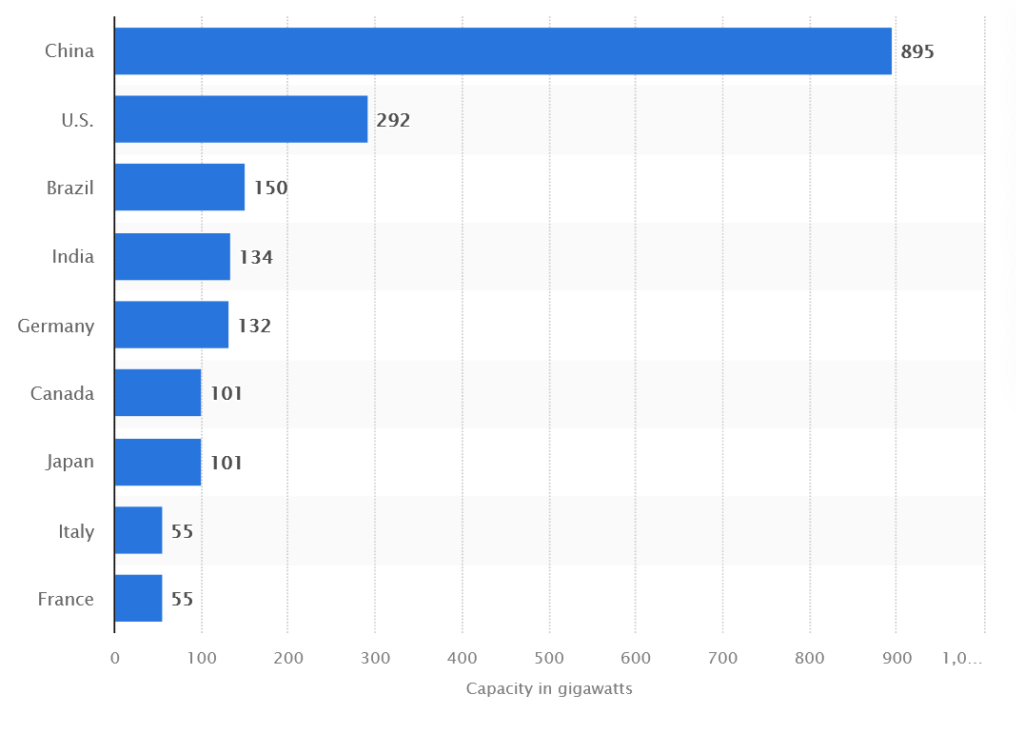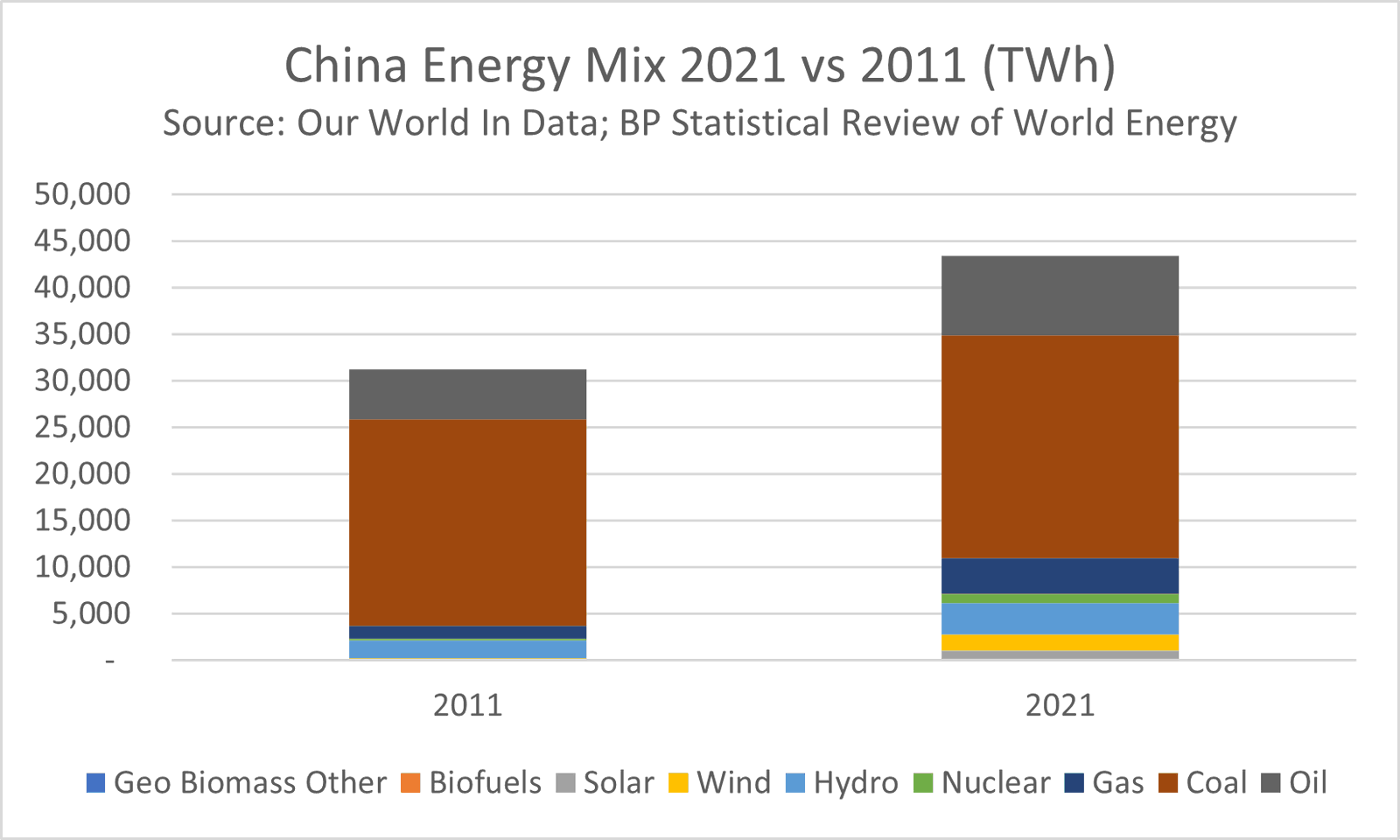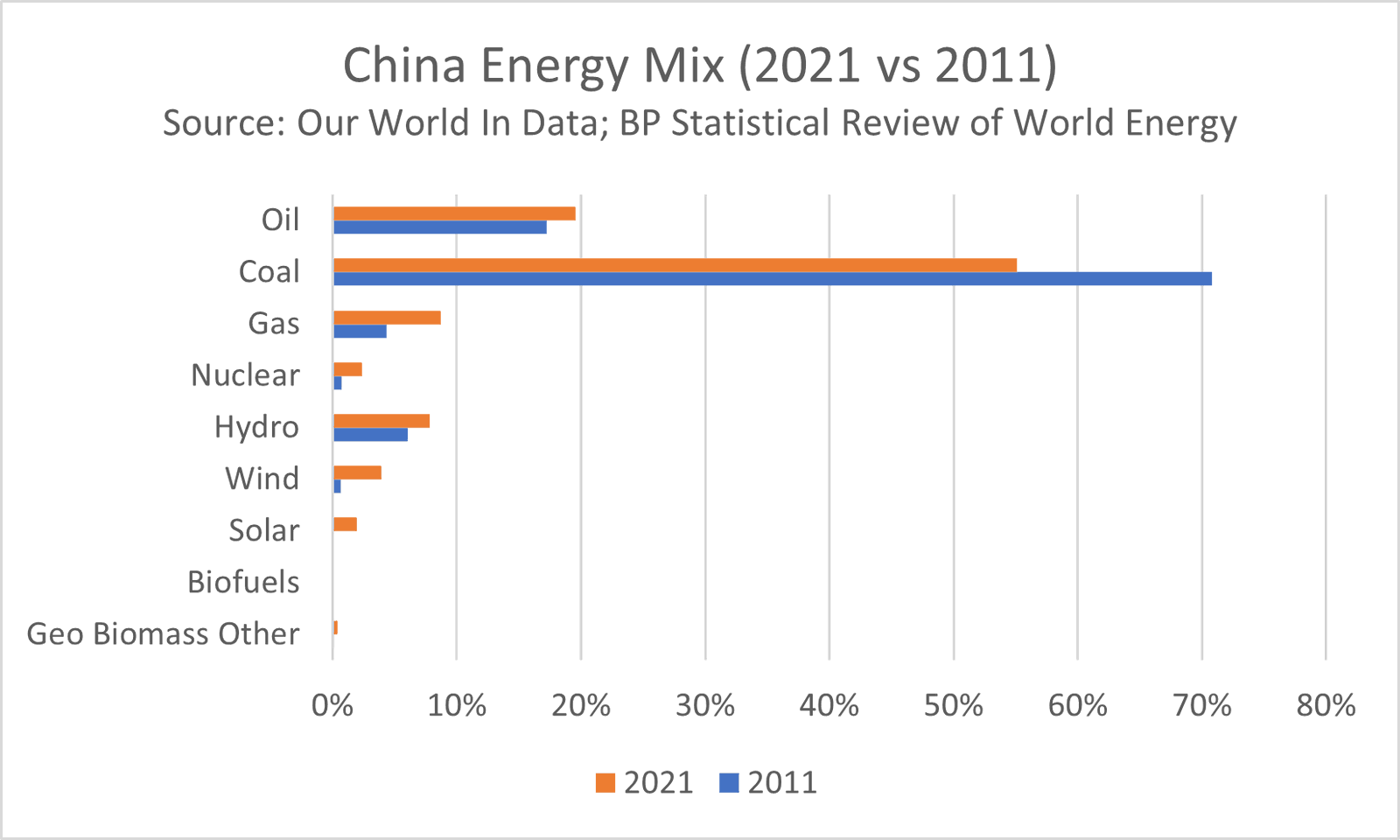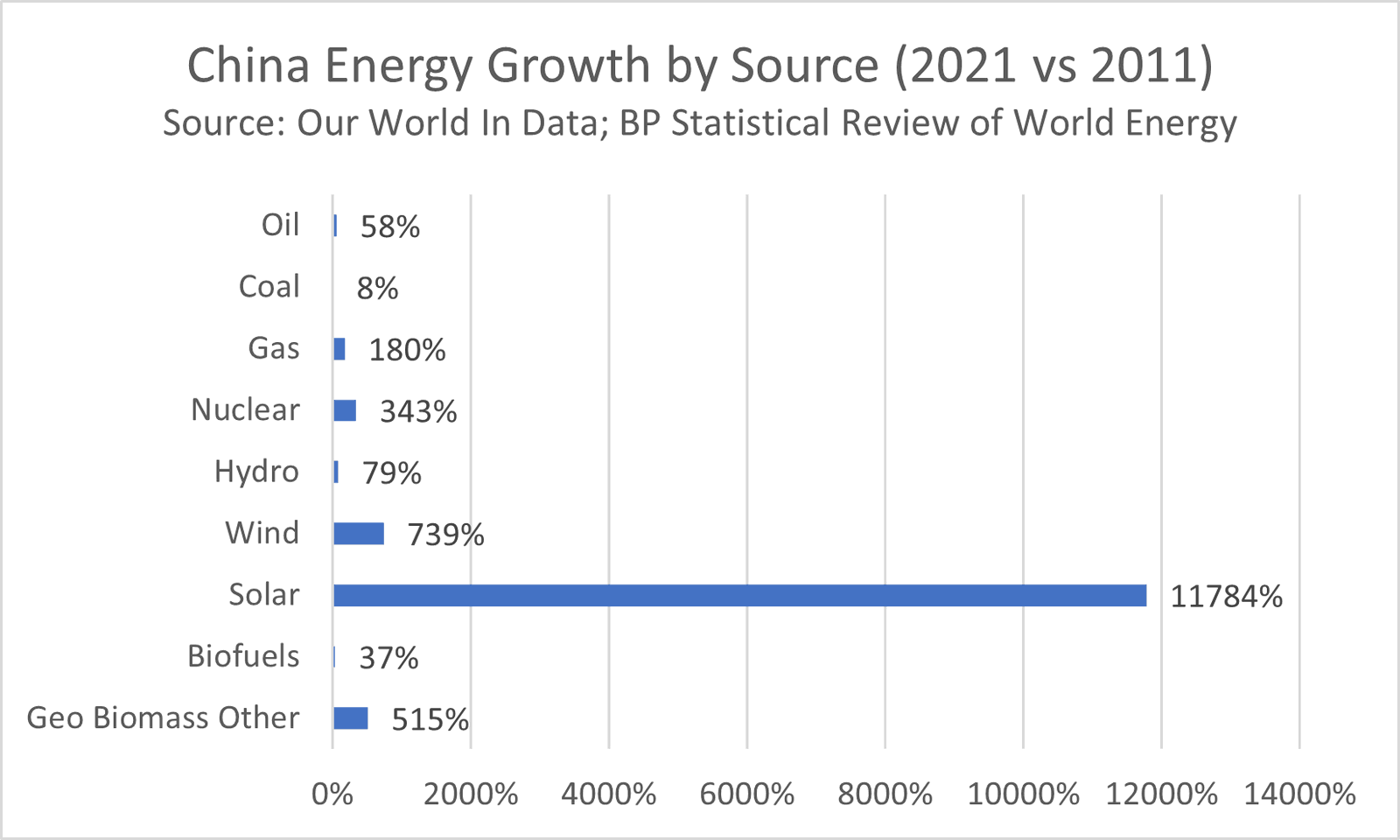Enough with ‘but China!’ - it’s the rest of us who need to catch up


· 7 min read
As a country, China is the world’s largest emitter of greenhouse gases, releasing a record 14.3 billion tonnes of carbon dioxide equivalent in 2021. A common refrain from those invested in maintaining status quo emissions-intensive activities goes: “We’re only responsible for [insert your country’s percentage] of global emissions. Why should we invest in emissions reduction while China’s emissions continue to rise?”
We call this claim “but China!”
Notwithstanding the immorality of such an argument, which is akin to people who choose to litter, claiming that their trash won’t make any difference in the scheme of things, it’s also self-defeatist. For example, the 28 European Union countries in aggregate produce 6-7% of global emissions. Add in another 15 or so developed and developing countries with emissions of about 1-2% each and you’re up to a material 25%. If those countries all took the same backsliding approach, we would have no hope of plateauing or reducing emissions.
Until being overtaken by India early in 2023, China had the world’s largest population (about 17.5% of the global) and currently produces about a quarter of annual global emissions. However, it ranks in the middle of the pack of major economies on a per capita basis, at 10 tonnes per person, around half that of Australia, the USA or Canada.
That only tells part of the story, because China is also the world’s factory. Developed nations have offshored much of their emissions to lower-cost economies, with China now responsible for over 14% of global exports, a whopping three quarters more than the next biggest exporter (USA). That US$3.6 trillion of mostly manufactured exports adds a massive emissions payload for China to absorb on top of its domestic consumption.
It’s also worth pointing out that China’s aggregate emissions are only half that of the USA (12.7% vs 25% since the start of the industrial revolution). Cumulative emissions matter, since carbon dioxide and most other greenhouse gases persist in the atmosphere for hundreds to thousands of years, continuing all the while to do their radiative forcing thing. The vast majority of emissions since the start of the industrial revolution are still up there, which is why until the world genuinely gets to net zero, it’s just going to keep getting hotter.
And it may surprise many people – particularly users of “but China” – to learn that China is doing quite staggering things both to rein in its own emissions and to supply goods to help the rest of the world decarbonise.
Given its manufacturing prowess, the country has long been the world’s largest manufacturer of solar panels and more recently wind turbines.
Less well understood is that it is also rolling out renewable technologies domestically at an incredible scale, dwarfing every other country as highlighted in the graph below.

Source: https://energytracker.asia/what-the-2021-china-wind-power-boom-means-for-the-world/
China’s renewables share of primary energy supply jumped to 15% in 2021, doubling from 7.5% a decade earlier. Primary energy covers all energy sources including transport and heat fuels, as shown in the graph below.

In the same period, total energy consumption rose by nearly 40% to a level nearly 70% more than the USA (the world’s second-highest energy user). So, in reality, China’s renewables production tripled in that decade. For comparison, the USA had a renewables mix of less than 11% of primary energy in 2021, up from about 7% in 2011, but its total consumption was flat during the decade. Its renewables production only increased by about 73% during the decade as shown in the figure below.

Some point out that China continues to build new coal-fired power stations. However, it’s worth noting that over the decade to 2021, electricity produced from coal grew by only 8%. While recent hot and dry conditions have reduced output from hydroelectric and prompted an increase in coal, the country committed in late 2020 to peak coal generation by 2025. Meanwhile, renewables grabbed a far higher share of the massive increase in consumption as shown in the graphs below.


By 2021, China had deployed over three times as much solar as the USA (the next largest) and was adding capacity 2.5 times as fast. By 2025, all new-build public buildings and factories will be required to cover at least half their rooftops with solar, a plan that has already seen a tripling of distributed solar in one year.
China is the biggest wind producer in the world, generating 37% more from its wind farms than the second-placed USA and adding 5 times as much capacity in 2020. In just one year (2021) it installed more offshore wind capacity than the rest of the world combined had built in the preceding five years!
It’s also the world’s largest installer of new hydroelectricity and plans to add 120 GW of pumped hydro storage by 2030.
China is the largest market for electric vehicles, with 3.3 million new registrations in 2021 representing half of all EVs sold globally. EVs accounted for about 14% of total Chinese registrations that year, vs 5% in the USA. It has a target of 40% of new car sales to be electric by 2030 and looks well on the way to smashing that, given forecasts that 35% of new vehicle sales will be in 2023! Sales have been turbocharged by the success of local EV brands such as BYD, which is nipping at Tesla’s heels and may well notch up the largest sales of pure battery electric vehicles this year.
Simultaneously, China has been building an impressive electrified public transport fleet. In addition to an extensive fast rail network, by the end of 2020, fully electric buses comprised 54% of the total fleet of around 700,000.
Overall, China made a massive 37% of the world’s investments in energy transition spending in 2021, also leading the world in nuclear, batteries, heat pumps, grid transmission and distribution, and green hydrogen. Take that, world!
But that’s not all. China is also a world leader in reforestation, creating newly forested areas larger than the whole of France and in the process increasing total forests from 16.7% in 1990 to 22.2% by 2018.
Its Forestry and Grassland Protection and Development Plan for 2021-2025 will increase forest coverage to 24%; “protect 55% of its wetland, a rise from 52% in 2020, and combat desertification in an area of… about 67,000km². The plan sets the goal of protecting more than 18% of the country’s land area by the end of 2025.” In comparison, the world has lost 11% of its tree cover since 2000, with the USA, Canada, Australia and New Zealand among the countries recording declines.
With all this progress, there are cautious but encouraging signs that China could beat its climate pledge of 25% of total energy consumption to come from non-fossil sources by 2030. It will need to, given the more muted progress being made in many other developed nations, whose own pledges, plans and achievements are continually undermined by those who cry, “but China!”
illuminem Voices is a democratic space presenting the thoughts and opinions of leading Sustainability & Energy writers, their opinions do not necessarily represent those of illuminem.
illuminem briefings

Geothermal · AI
illuminem briefings

Solar · Renewables
illuminem briefings

Solar · Renewables
Politico

Solar · Public Governance
Colombia One

Solar · Renewables
BBC

Renewables · Energy